-
 (L: ©Brienz Rothorn Bahn AG / R: ©Oigawa Railway Co., Ltd.)
(L: ©Brienz Rothorn Bahn AG / R: ©Oigawa Railway Co., Ltd.)
-
 (©Brienz Rothorn Bahn AG)
(©Brienz Rothorn Bahn AG)
-
 (©Oigawa Railway Co., Ltd.)
(©Oigawa Railway Co., Ltd.)
Oigawa Railway ― Brienz Rothorn Bahn (1977)
Chubu | Shizuoka Prefecture - Haibara District
Train & Transportation
Nineteenth century Swiss rail technology has changed Swiss mountain tourism and the future of the Oi Valley, as well as the relationship between two iconic railway companies.
Steam along the Oi River
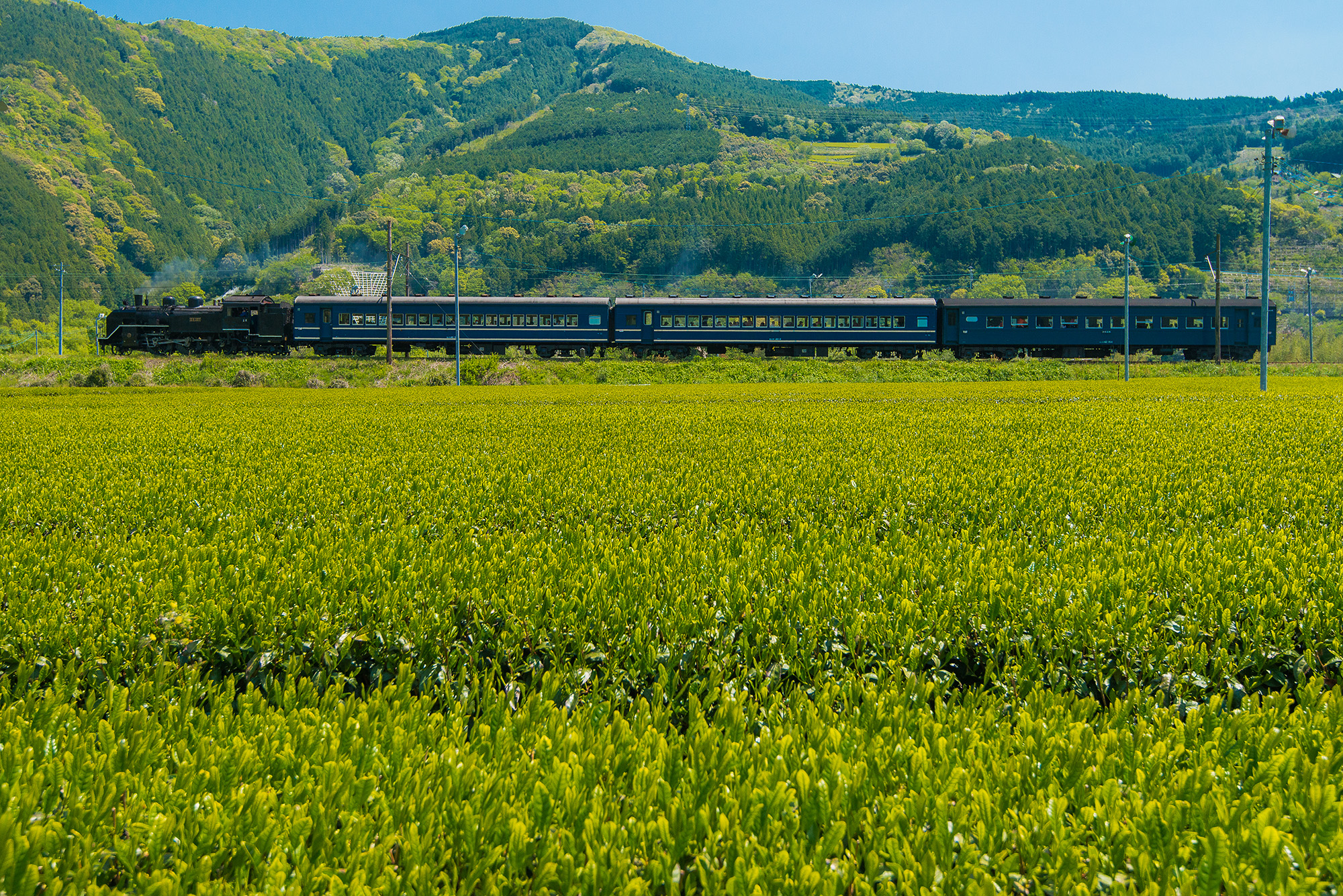
(©Oigawa Railway Co., Ltd.)
Did you know that there is a place in Shizuoka Prefecture where one can ride a retro steam train through beautiful mountainous landscapes and green tea plantations? Running from Shimada to the Kawanehon-cho, Oigawa Railway (OR) is a small private railway company whose 90 year-old tracks follow the 65km-long course of the Oi River towards the southern Japanese Alps. Every year, some 200,000 visitors and numerous TV and film crews in search for authenticity ride the Oigawa Main Line in one of the company’s four 1930s-era locomotives and their 1950s-era wooden passenger coaches. The OR also transports over 1 million commuters and sightseers in its regular electric and diesel railcars.
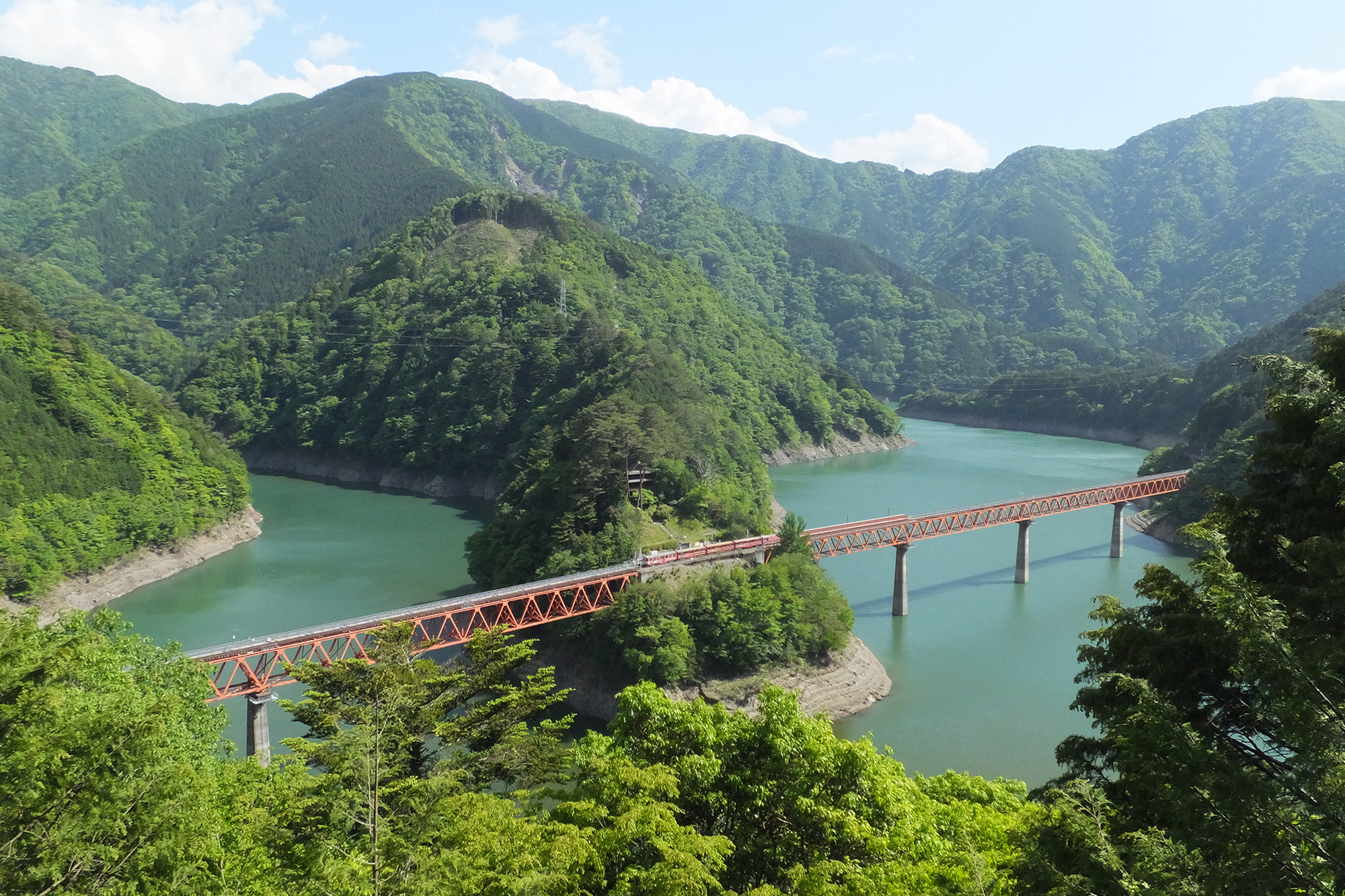
(©Oigawa Railway Co., Ltd.)
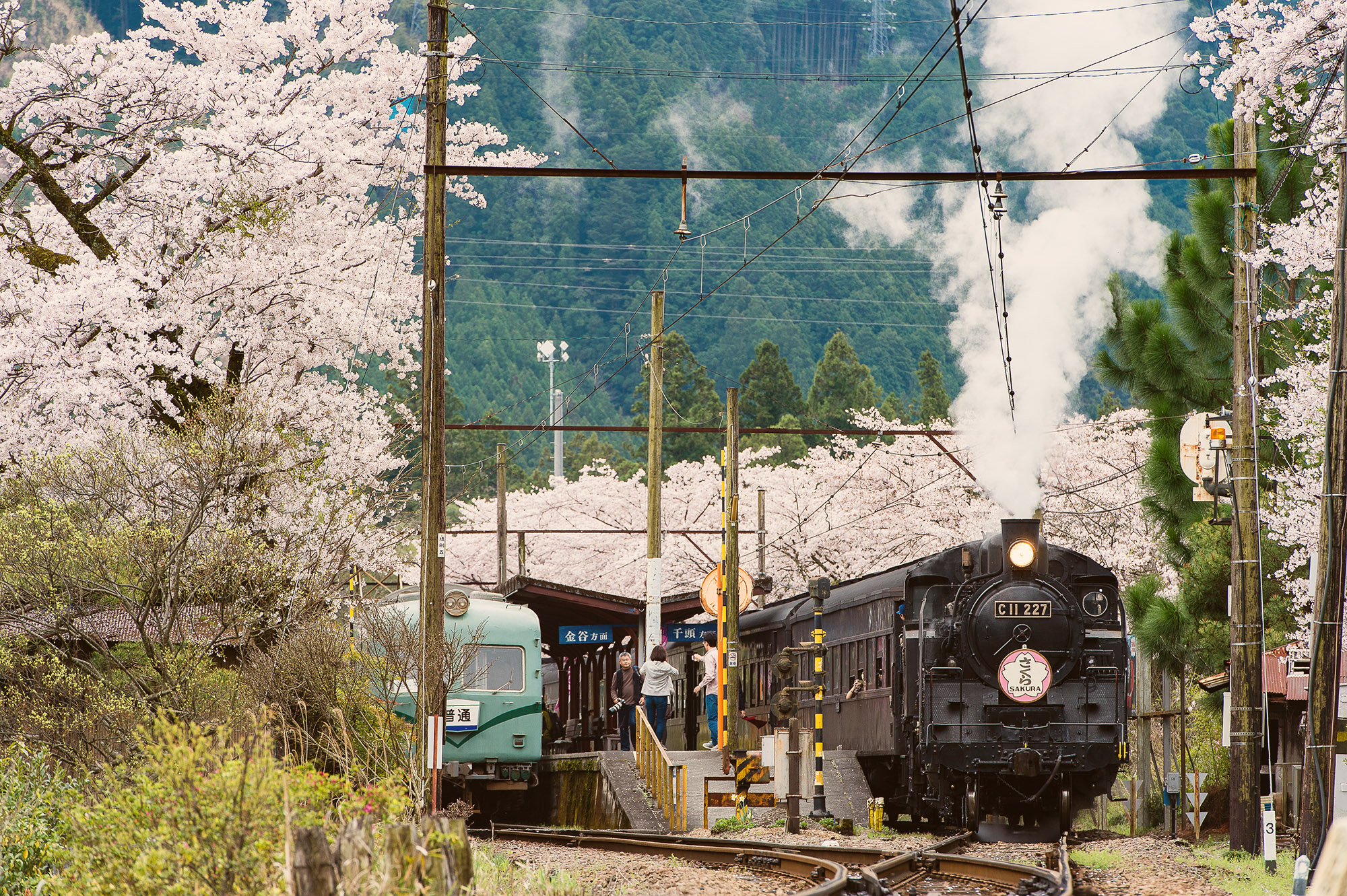
(©Oigawa Railway Co., Ltd.)
The company’s offer is unique in two ways. On the one hand, the OR runs the country’s only steam line still in daily operation. On the other hand, its lines are also the only in Japan to use the Abt rack railway system (rack-and-pinion sections using solid bars with vertical teeth machined into them), a revolutionary steep grade railway technique invented by Swiss engineer Carl Roman Abt in 1882. And believe it or not, this technique is precisely what triggered the existence of the Oigawa lines as we know them today!

The only Abt rack railway system in Japan (©Oigawa Railway Co., Ltd.)
Revitalization and Abt racks
Built in the early 20th century for transporting goods, construction materials, and travelers along the Oi River Valley, the line owned by Japan National Railways in the Oi Valley faced a dramatic decrease of activity as the construction of local dams were finalized and as the national highway system was expanded. In July 1976, as passenger services were curtailed, the OR, a privately owned organization, came forward with a new vision for the near-defunct line: turning it into a tourist attraction!
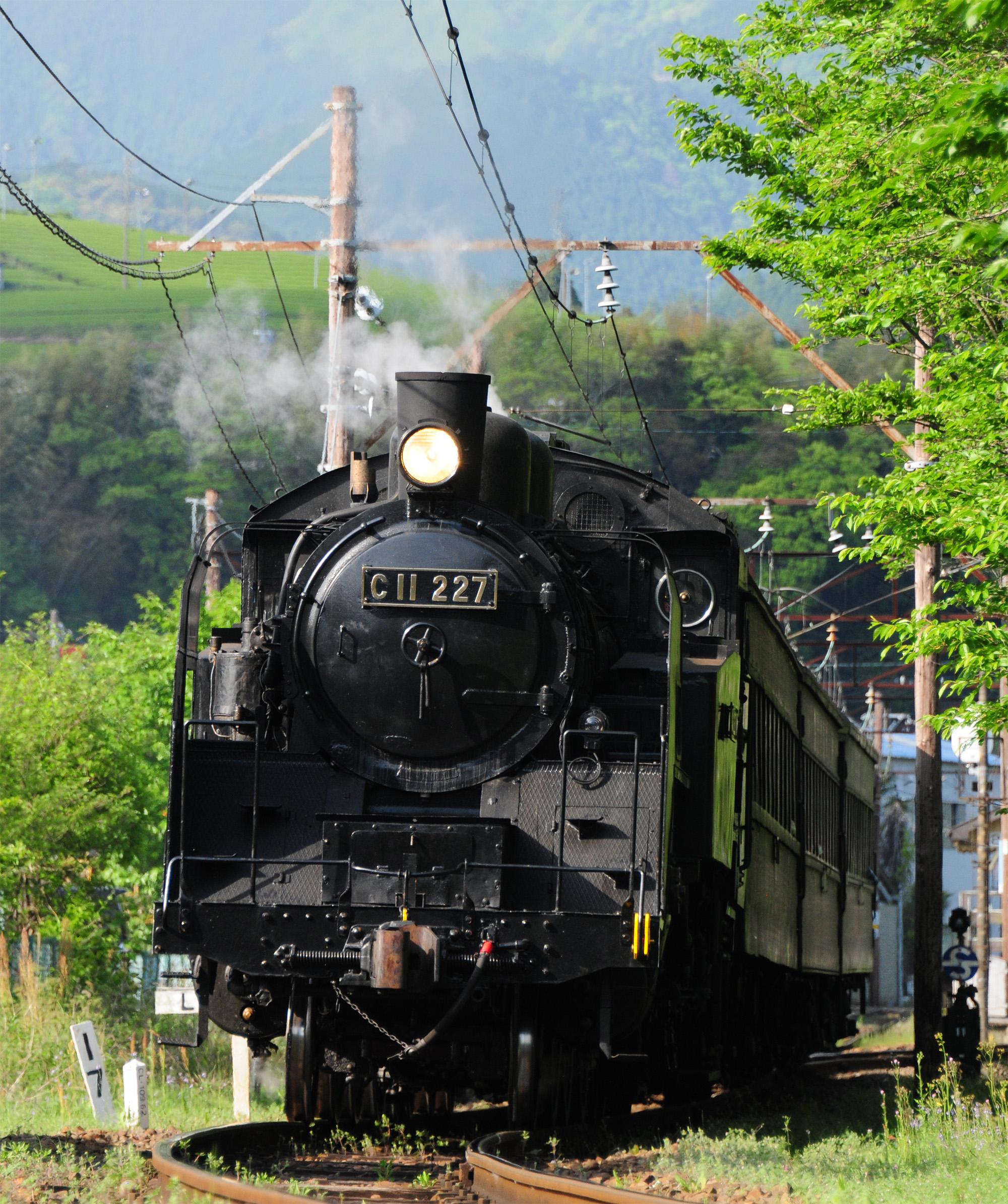
One of the classic steam locomotives bought by Oigawa Railway (©Oigawa Railway Co., Ltd.)
Having noticed the success of Switzerland’s Brienz Rothorn Bahn (BRB) and its steam locomotive’s Abt rack railway system (which allows the trains to operate on steep grades above 7%, which is the maximum for friction-based rail), the Japanese company purchased two old steam locomotives and refitted them in a similar fashion. From utilitarian means of transportation, the new lines would now convey the magic, the nostalgia, and the pioneering spirit of early 20th century trains!
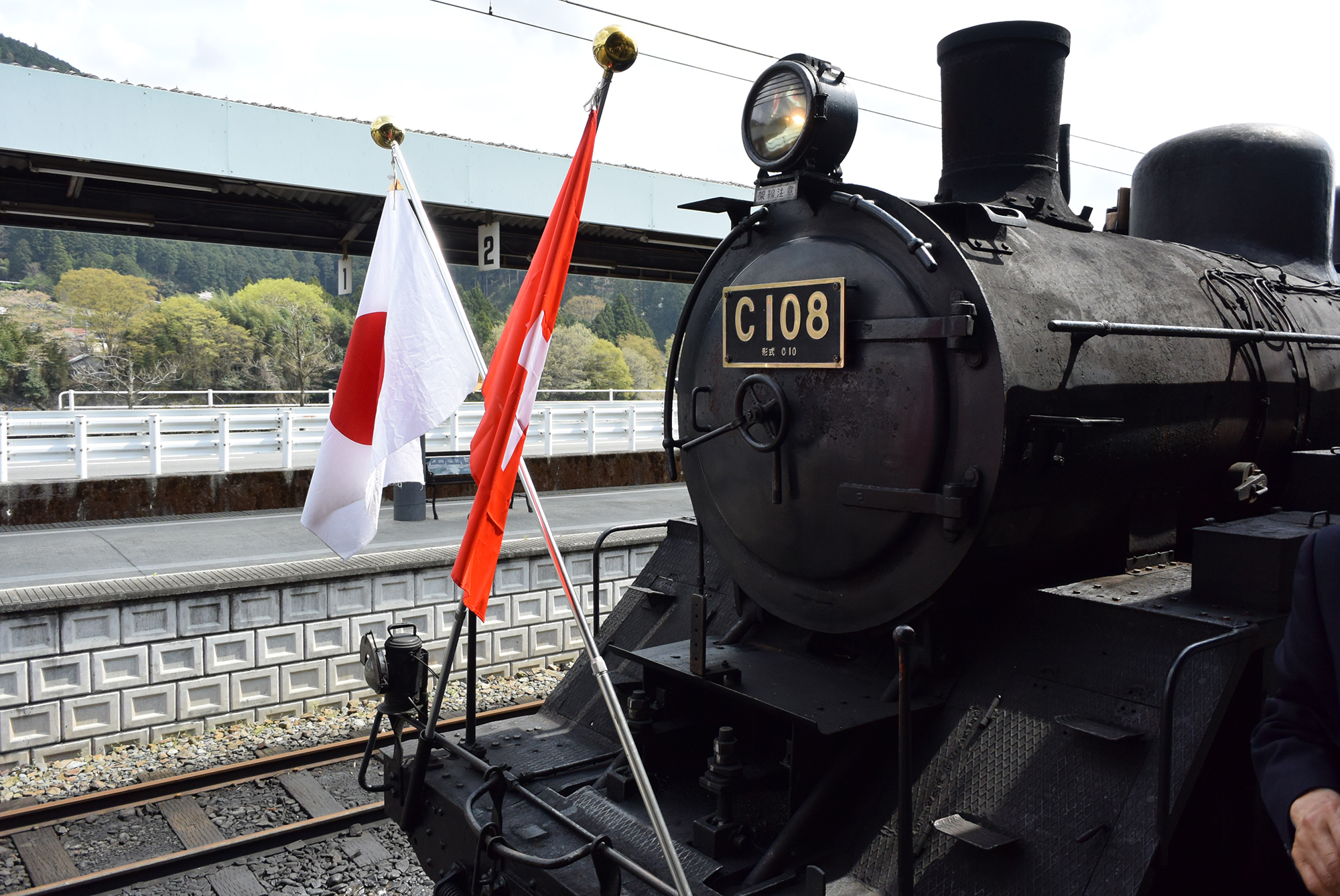
Oigawa Railway - BRB: another story of friendship between Switzerland and Japan! (©Oigawa Railway Co., Ltd.)
On December 12, 1977, to celebrate their beneficial collaboration and their efforts in preserving their country’s railway heritage, the OR and the BRB signed a sister railway partnership, inaugurating a series of yearly visits and exchanges of information which to this day take place in the spirit of friendship and cooperation. Twenty years later, on August 10, 1996, Kanaya Town (Shimada) and Brienz even signed a sister-cities partnership as a result. In October 2014, on the occasion of the 150th anniversary of the establishment of their diplomatic relations between Switzerland and Japan, an exhibition of 26 photographs of Swiss mountain trains by railway photographer Seiya Nakai was displayed in the carts of the Japanese railway. Among them, the world-renowned Brienz Rothorn Bahn.
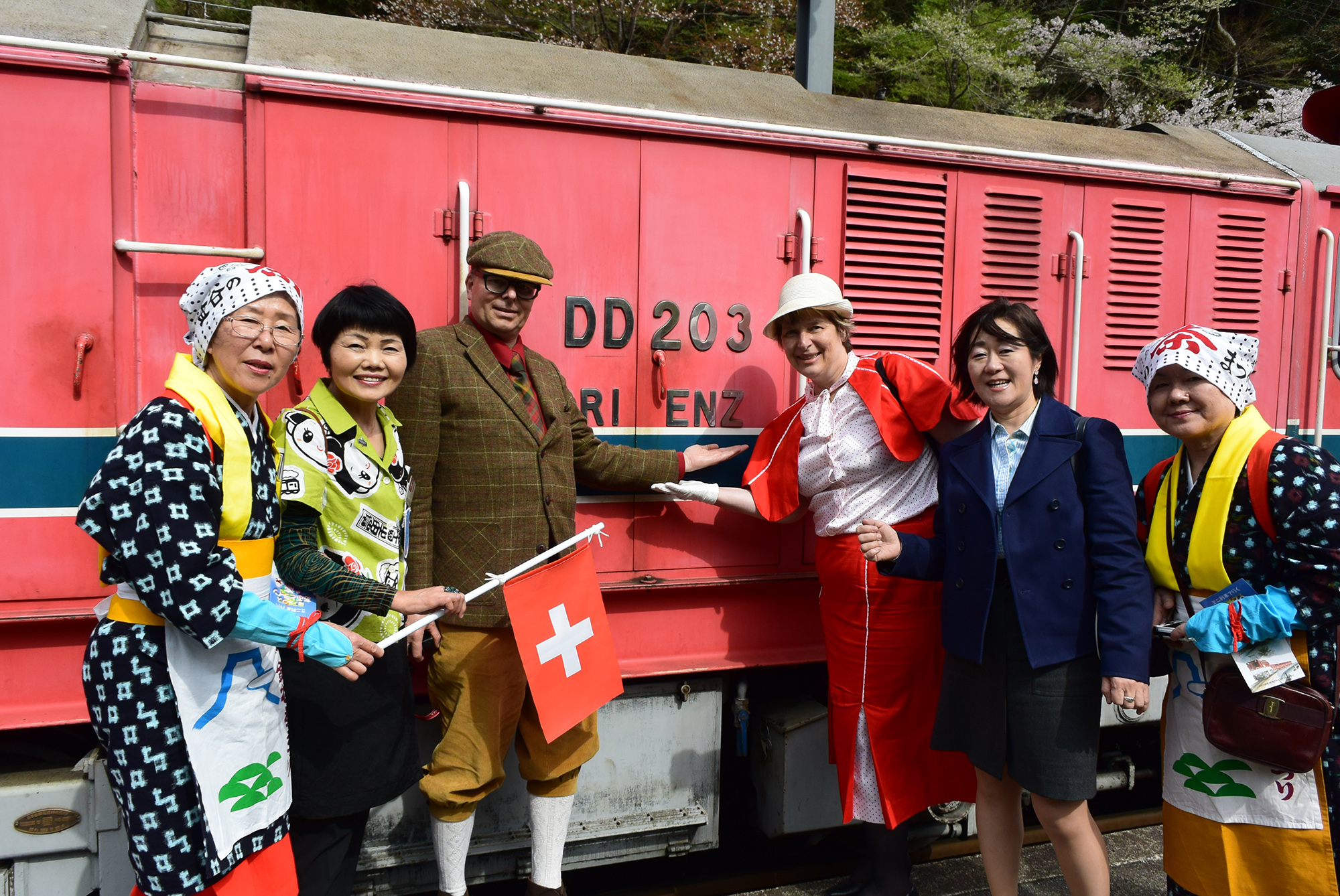
2017: Visit of a BRB delegation in Shimada (©Brienz Rothorn Bahn AG)
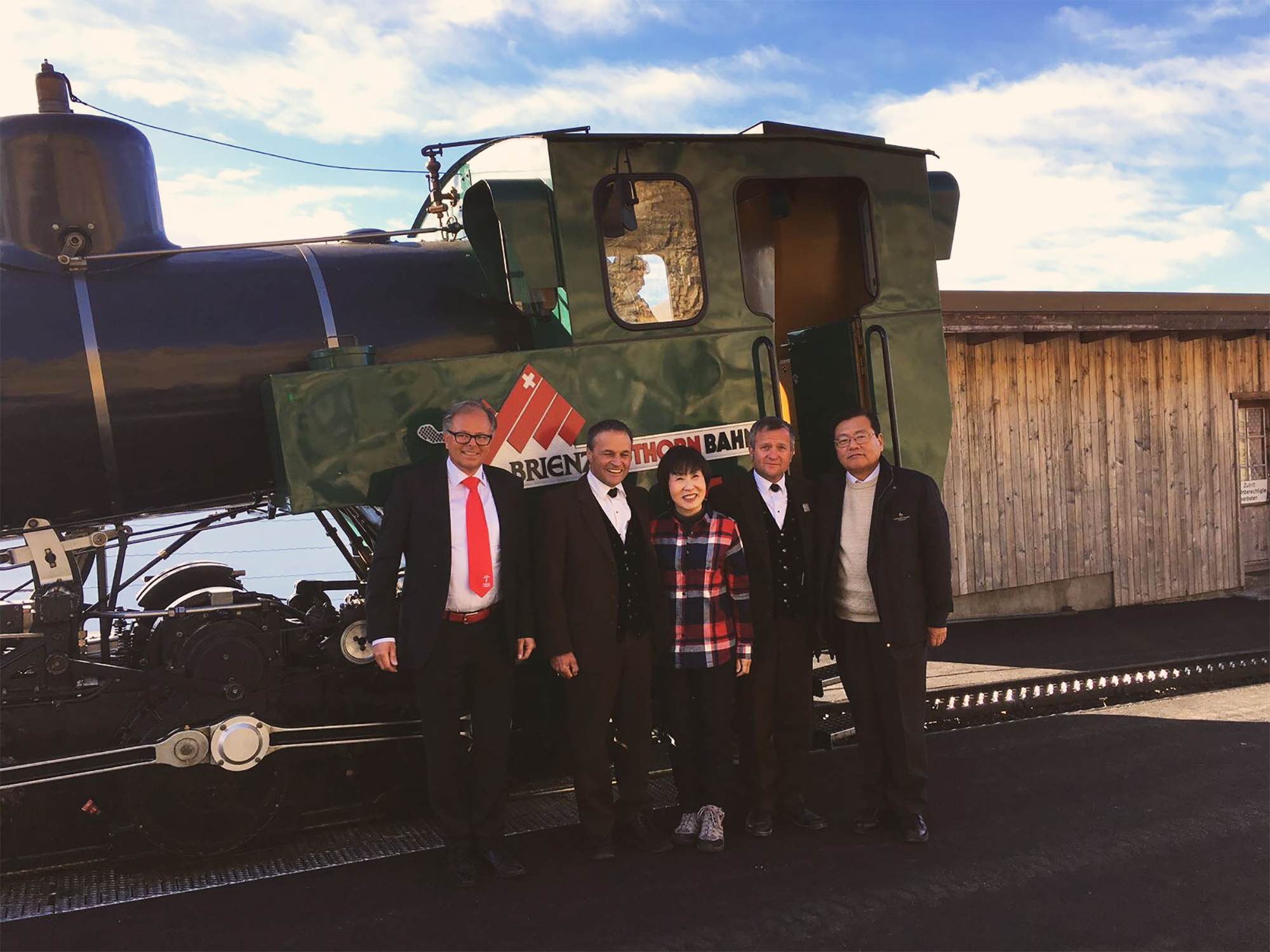
2017: Visit of an Oigawa Railway delegation in Brienz (©Brienz Rothorn Bahn AG)
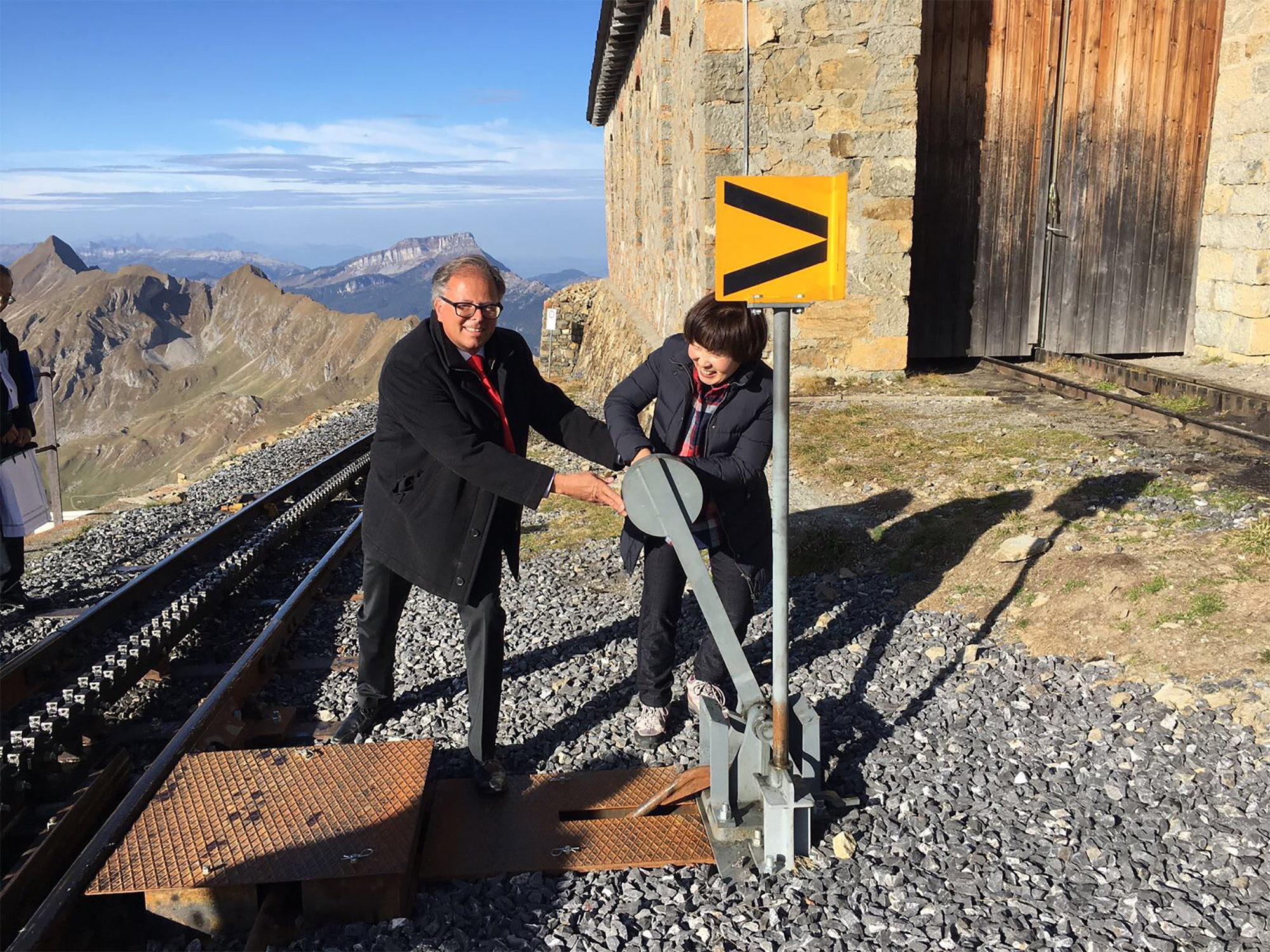
2017: Learning from BRB expertise! (©Brienz Rothorn Bahn AG)
The Alps on tracks
Ever since June 17, 1892, the Brienz Rothorn Railway in Brienz in the Bernese Oberland has been stomping, huffing and puffing towards the Brienzer Rothorn (2,350 m). Constructed over a two-years period by engineer Alexander Lindner and contractor Theo Bertschinger, the line was made possible thanks to the innovation of Carl Roman Abt, which provided with a low-cost and efficient solution to overcome climbs with a highly steep gradient (25%) in the Swiss Alps. Unlike other Swiss mountain lines, the BRB is not electrified and operates a full steam service, which have contributed in making the railway one of the most unique experiences among Switzerland’s transportation. Nowadays, it can notably be discovered via the Grand Train Tour of Switzerland.
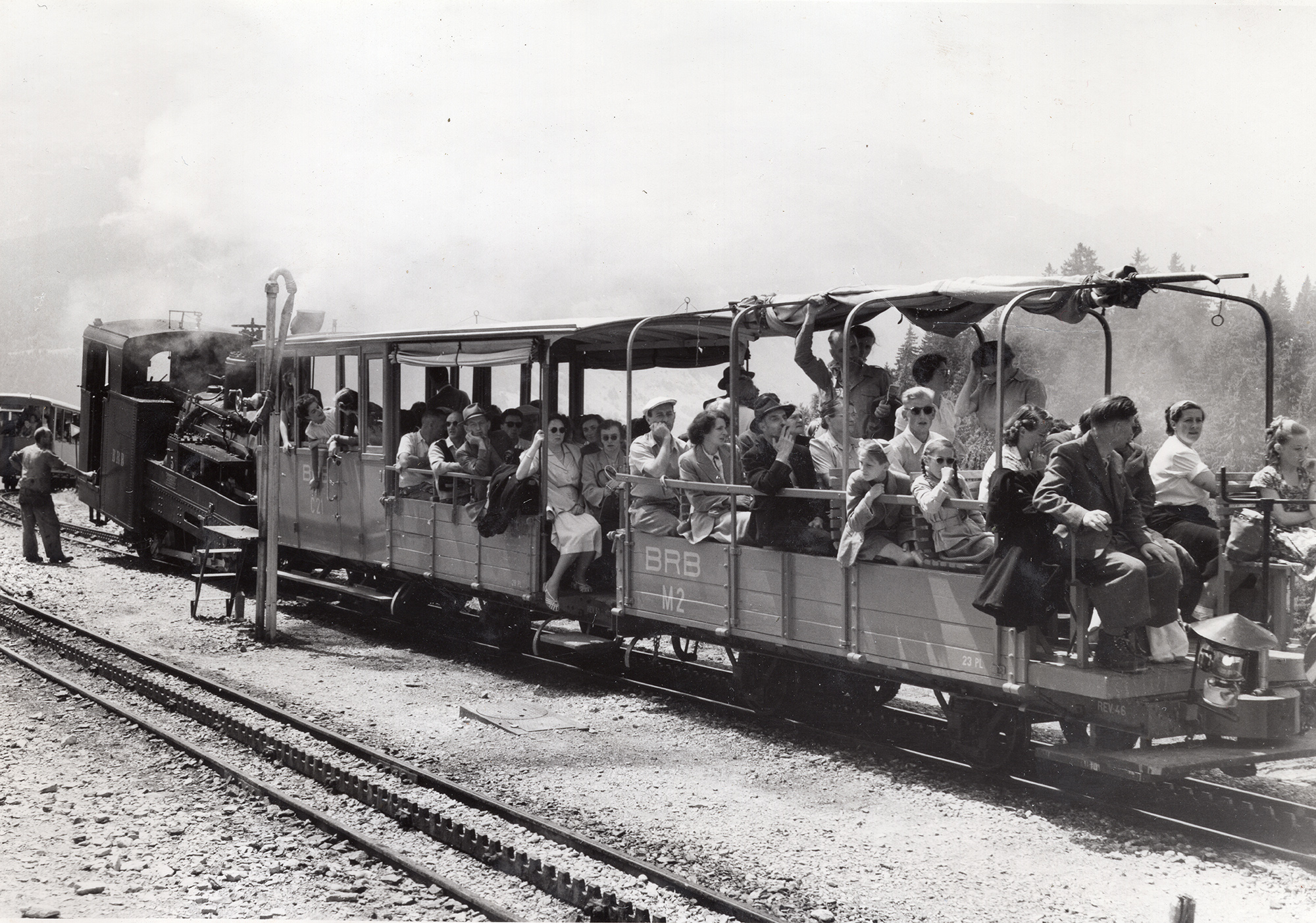
The Brienz Rothorn Railway around the mid-20th Century (©Brienz Rothorn Bahn AG)
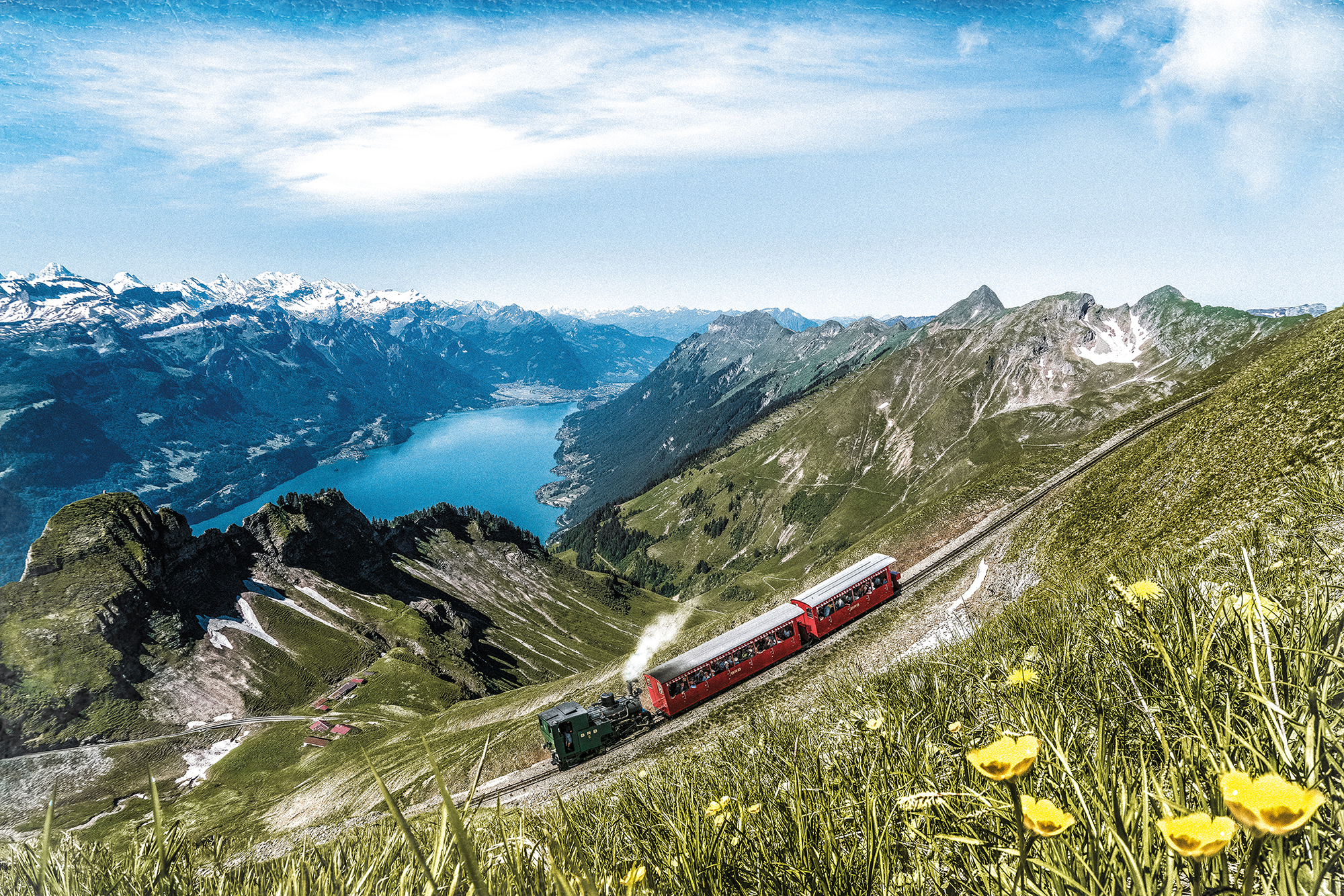
The Brienz Rothorn Railway offers a plunging view on the Interlaken region (©Brienz Rothorn Bahn AG)
In roughly one hour and through 5 tunnels, the small steam locomotives push the merry red panorama coaches from Lake Brienz up to the Rothorn Kulm station (2,244 m), which can also be reached by aerial cableway from the neighboring UNESCO biosphere Entlebuch (Sörenberg). The view over the Bernese Alps, Lake Brienz and the Grimsel area is magnificent – as is the view of the Pilatus and of the Hogant. Summit restaurants and the Mountain Lodge Rothorn Kulm with newly refurbished rooms guarantee a memorable stay with spectacular sunsets and sunrises. From the green tea plantations to the heights of the Alps, the railway ties between Switzerland and Japan cover some of the two countries’ most iconic locations... So remember to bring a bit of green tea next time you ride the BRB!
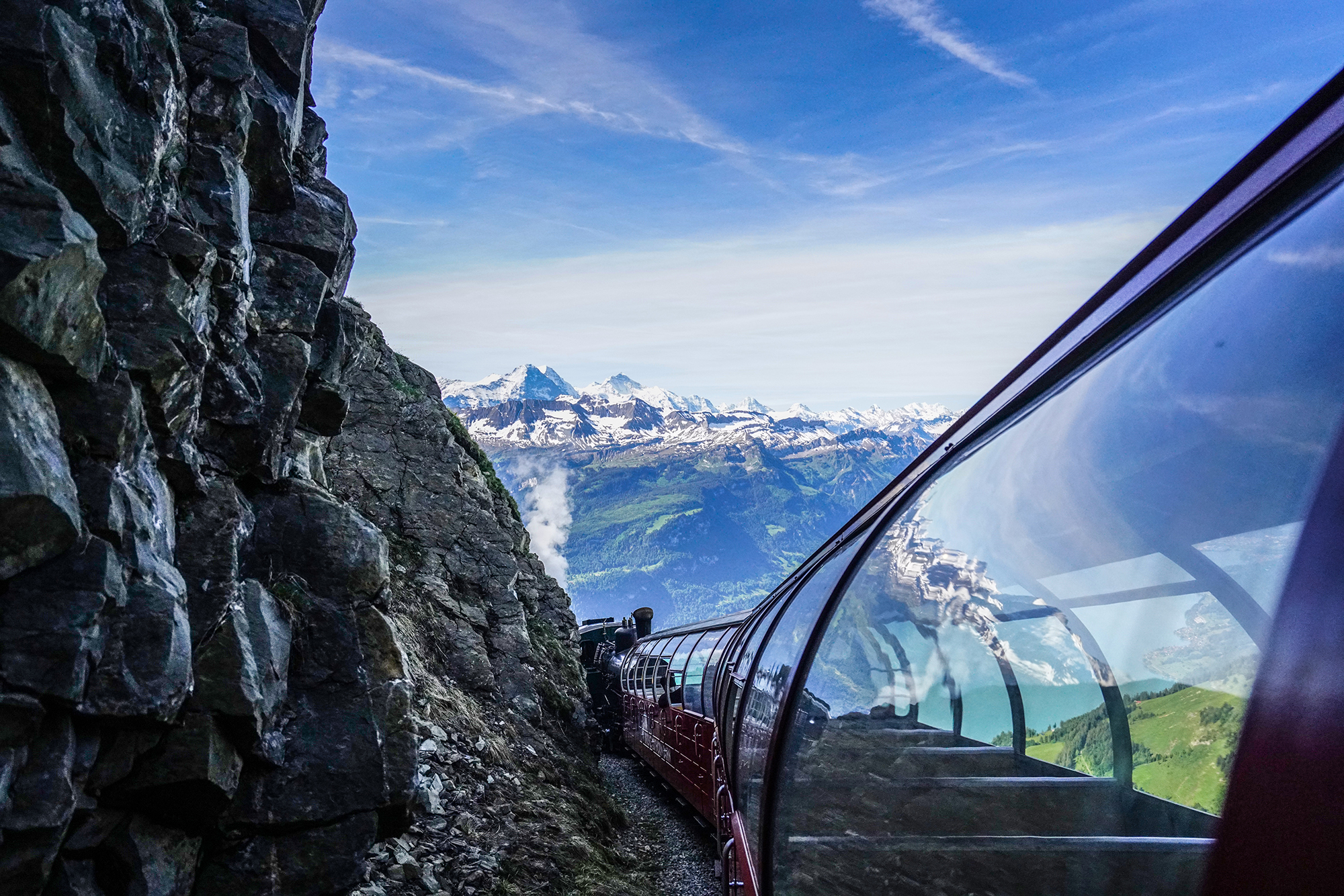
BRB panoramic cars offer a unique immersion in the Swiss Alps (©Brienz Rothorn Bahn AG)
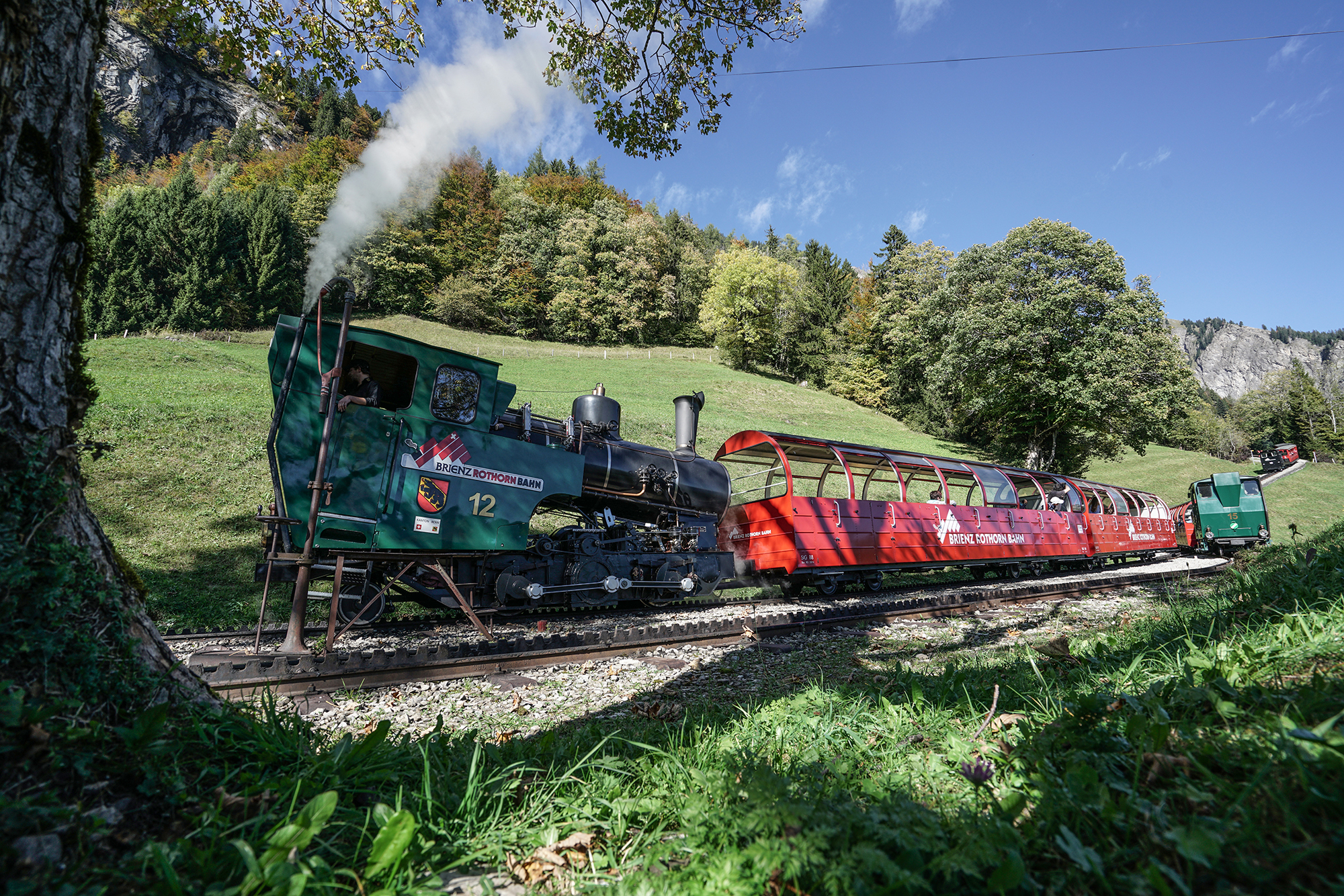
(©Brienz Rothorn Bahn AG)

Wild animals such as ibexes can often be spotted during the journey (©Brienz Rothorn Bahn AG)



